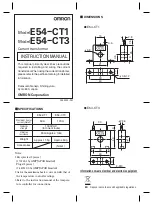
English
! Do not forget to replace the rubber flap after charging.
Battery capacity (mAh)
Time (hours)
1.200
10
1.800
15
APPROXIMATE TIMES FOR A COMPLETE RECHARGE
ACCORDING TO THE TYPE OF BATTERY USED
4.3.b Supplied desk top battery charger
1) Ensure that the battery pack is installed (the charger does not
work with AA type NiMH batteries).
2) Ensure that the radio is turned off (it must remain turned off for the
whole charging cycle)
3) Insert the transceiver, with the front facing you into the battery
charger slot, and then connect the battery charger to an AC power
source. Charging will begin, and the appropriate LED indicator will
light up.
4) When charging is complete take out the transceiver from the
housing and unplug the battery charger from the mains.
The battery pack is 1800mAh and takes approximately 10 hours for
a full charge.
4.4 Proper use of rechargeable batteries
When possible, recharge batteries only when at least two of the icon
bars have disappeared (the remaining battery charge icon should
indicate
). Be aware that charging time varies in proportion to the
amount of residual charge remaining in the battery, therefore, when
only two bars appear in the icon, this indicates you will require about
66% of time indicated on the table in par. 4.3.a. This is particularly
important otherwise you risk undercharging or overcharging the
batteries.
If you use the batteries properly, you will obtain at least 400 cycles of
charge/discharge at maximum duty.
2
Rechargeable batteries lose their charge over time even if they
are not used (auto-discharge); this is normal. A NiMH (Nickel
Metal Hydrate) battery may lose 10 - 20% of its energy within a
few days.
4.4.a Memory effect
Rechargeable NiMH (Nickel-Metal-Hydrate) batteries are virtually
unaffected by the “memory effect”. This phenomenon is associated
with a drastic reduction of battery autonomy and is triggered if the
batteries are regularly charged before having lost at least 50-75% of
their power and/or they are not completely recharged. To avoid the
memory effect:
• When possible, recharge the batteries only when they are
completely discharged; i.e. when the battery indicator will be
flashing.
• Do not disconnect the battery charger before battery charging is
complete.
• Discharge and recharge your batteries completely at least twice a
month.
In any case, the best solution for avoiding the memory effect is to
use in turn two battery sets: while one in use the spare set can be
fully charged.
Memory effect can be easily cancelled after 3-4 complete cycles of
charge/discharge.
2
The memory effect should not be confused with the normal













































